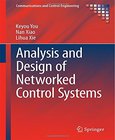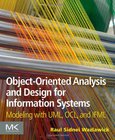Algorithm Design for Networked Information Technology Systems

Book Details:
| Publisher: | Springer |
| Series: | Springer , Technology |
| Author: | Sumit Ghosh |
| Edition: | 1 |
| ISBN-10: | 0387955445 |
| ISBN-13: | 9780387955445 |
| Pages: | 403 |
| Published: | Dec 15 2003 |
| Posted: | Nov 19 2014 |
| Language: | English |
| Book format: | |
| Book size: | 119.44 MB |
Book Description:
This book presents a scientific theory of Networked information technology (NIT) systems and logically develops the fundamental principles to help synthesize control and coordination algorithms for these systems. The algorithms described are asynchronous, distributed decision-making (ADDM) algorithms, and their characteristics include correct operation, robustness, reliability, scalability, stability, survivability, and performance. The book explains through case studies the conception, development, experimental testing, validation, and rigorous performance analysis of practical ADDM algorithms for real-world systems from a number of diverse disciplines. Practitioners, professionals, and advanced students will find the book an authoritative resource for the design and analysis of NIT systems algorithms. Topics and features: Develops a logical and practical approach to synthesizing ADDM algorithms for NIT systems Utilizes a scientific method to address the design testing of NIT systems Incorporates case studies to clearly convey principles and real-world applications Provides a full context for engineers who design, build, deploy, maintain, and refine network-centric systems spanning many human activities Offers background on core principles underlying the nature of network-centric systems
Book categories:
Programming , Software , Networking , Operating Systems , Languages & Tools , Programming Languages , Networks, Protocols & APIs , AlgorithmsDownload Link:
Related Books:
Analysis and Design of Networked Control Systems
This monograph focuses on characterizing the stability and performance consequences of inserting limited-capacity communication networks within a control loop. The text shows how integration of the ideas of control and estimation with those of communication and information theory can be used to provide important insights concerning several fundamental problems such as: minimum data rate for stabilization of linear systems over noisy channels; minimum network requirement for stabilization of linear systems over fading channels; and stability of Kalman filtering with intermittent observations.A fundamental link is revealed between the topological entropy of linear dynamical systems and the capacities of communication channels. The design of a logarithm...
Object-Oriented Analysis and Design for Information Systems
Modeling with UML, OCL, and IFML
Object-Oriented Analysis and Design for Information Systems clearly explains real object-oriented programming in practice. Expert author Raul Sidnei Wazlawick explains concepts such as object responsibility, visibility and the real need for delegation in detail. The object-oriented code generated by using these concepts in a systematic way is concise, organized and reusable. The patterns and solutions presented in this book are based in research and industrial applications. You will come away with clarity regarding processes and use cases and a clear understand of how to expand a use case. Wazlawick clearly explains clearly how to build meaningful sequence diagrams. Object-Oriented Analysis and Design for Information Systems illustrates how and why ...
Information Technology in Environmental Engineering
Selected Contributions to the Sixth International Conference on Information Technologies in Environmental Engineering
Information technologies have evolved to an enabling science for natural resource management and conservation, environmental engineering, scientific simulation and integrated assessment studies. Computing plays a significant role in the every day practices of environmental engineers, natural scientists, economists, and social scientists. The complexity of natural phenomena requires interdisciplinary approaches, where computing science offers the infrastructure for environmental data collection and management, scientific simulations, decision support, documentation and reporting. Ecology, environmental engineering and natural resource management comprise an excellent real-world testbed for IT system demonstration, while presenting new challenges for c...
2007 - 2021 © eBooks-IT.org



